Α)1989: FW190 Found In Forest Clearing Outside Of St Petersburg Leningrad (Watch)
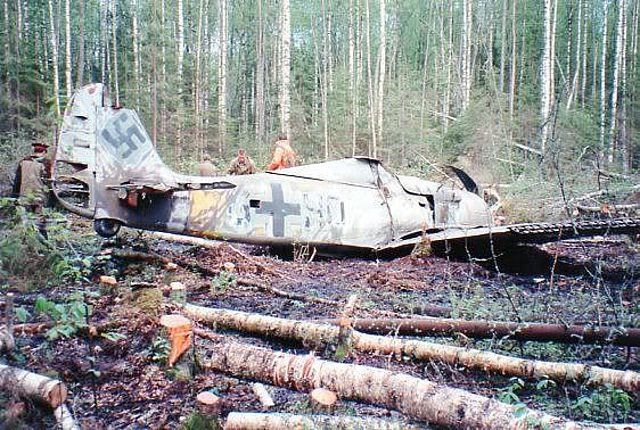
The FW190 was found in a silver birch forest 1989, near St Petersburg, it was recovered by helicopter in 1991. The current owners are the Flying Heritage Collection which is operated by Paul Allen.
Information
from researchers involved with the restoration confirms that the pilot
of the Fw190, Paul Rätz, was a POW and repatriated to Germany in 1949.
He passed away in 1989 and his son aided in the research for the
restoration.
Paul Rätz was a ground crew member before becoming a pilot with 1./JG54 in 1942 and 1943. He had several air victories and survived three crash landings. He was best known as a ground attack pilot and transferred to 4./JG54 on July 9, 1943.

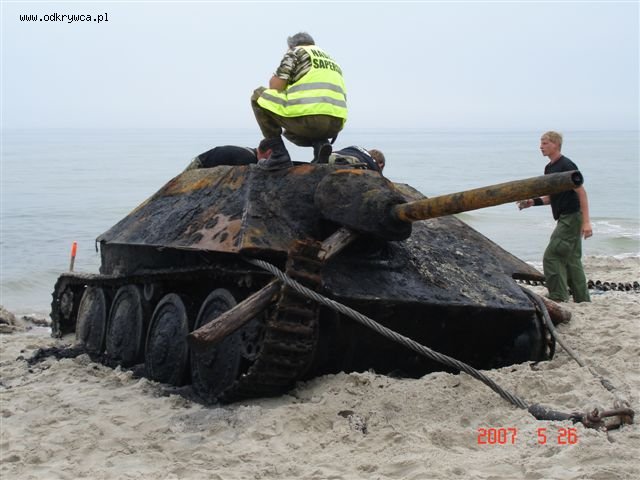
The Jagdpanzer 38 was intended to be more cost-effective than the much more ambitious Jagdpanther and Jagdtiger designs of the same period. Using a proven chassis, it avoided the mechanical problems of the larger armoured vehicles.
It was better armored than the thinly armoured earlier Panzerjäger Marder and Nashorn with a sloped armour front plate of 60 mm sloped back at 60 degrees from the vertical (equivalent in protection to about 120 mm), carried a reasonably powerful 75mm gun, was mechanically reliable, small and easily concealed. It was also cheap to build.
The Jagdpanzer 38 succeeded the open-top Marder III (based on the same chassis) in production from April 1944; about 2584 were built until the end of the war. The older Marder III Panzerjäger series retained the same vertically sided chassis as Panzer 38(t).
In the Jagdpanzer 38, the lower hull sides slope 15 degrees outward to make roughly hexagonal shape when viewed from front or rear.
This increased the available interior space and enabled a fully enclosed casemate-style fighting compartment. Because of the fully enclosed armor, it was 5 tonnes heavier than the Marder III.
To compensate for the increased weight, track width was increased from 293 mm to 350 mm.
With thanks to the guys over at odkrywca.pl
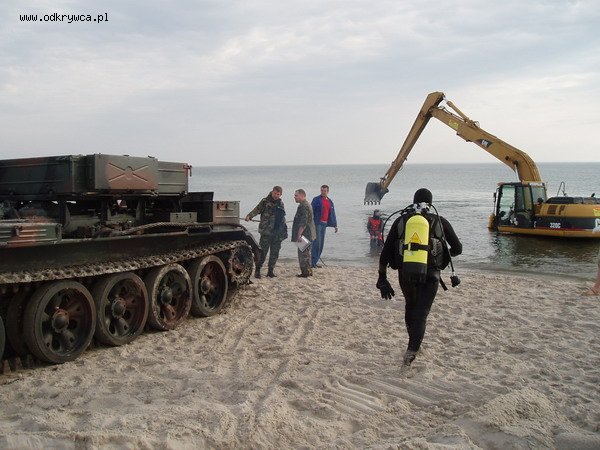 A massive digger and a recovery tank are present to recover the Hetzer
A massive digger and a recovery tank are present to recover the Hetzer
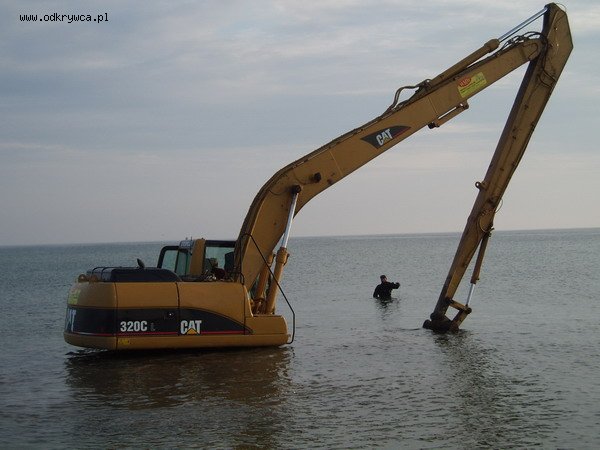 It is out there somewhere
It is out there somewhere
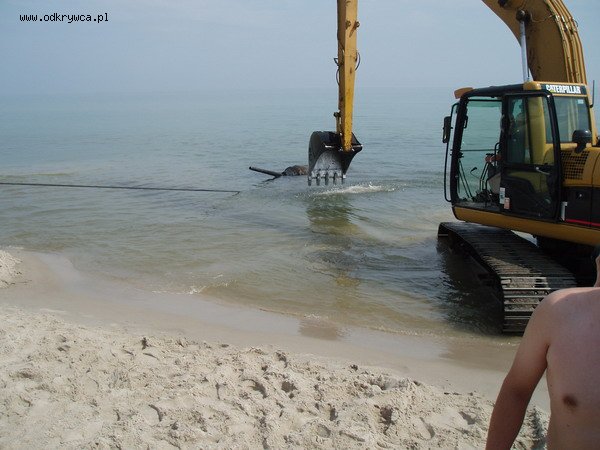 There it is, the first time above the water in over 65 years!
There it is, the first time above the water in over 65 years!
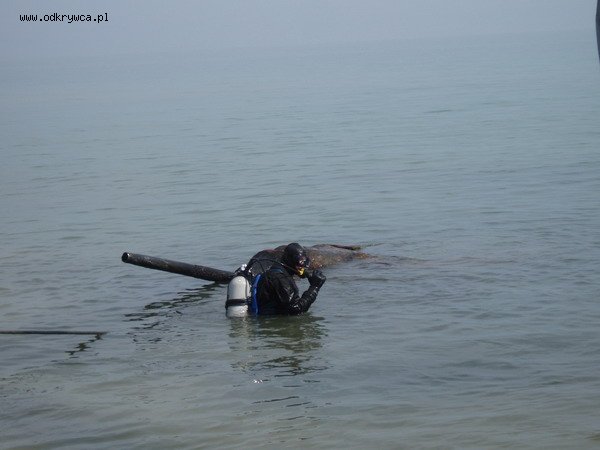 A beautiful sight, seeing it slowly rise above the water
A beautiful sight, seeing it slowly rise above the water
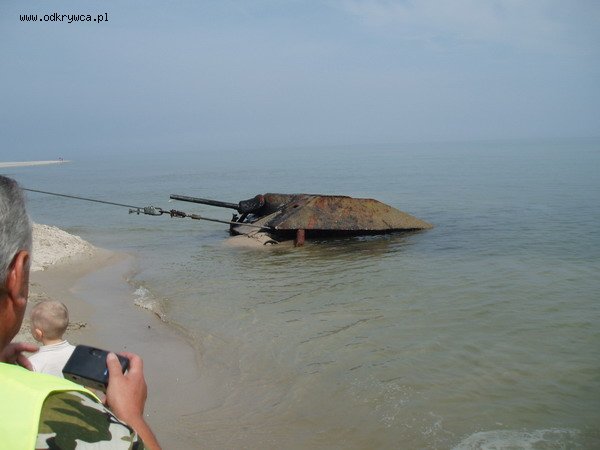 Nearly
on dry land, look at the sandbar that has immediately formed in front
of the Hetzer, some serious power is needed to get it on dry land!
Nearly
on dry land, look at the sandbar that has immediately formed in front
of the Hetzer, some serious power is needed to get it on dry land!
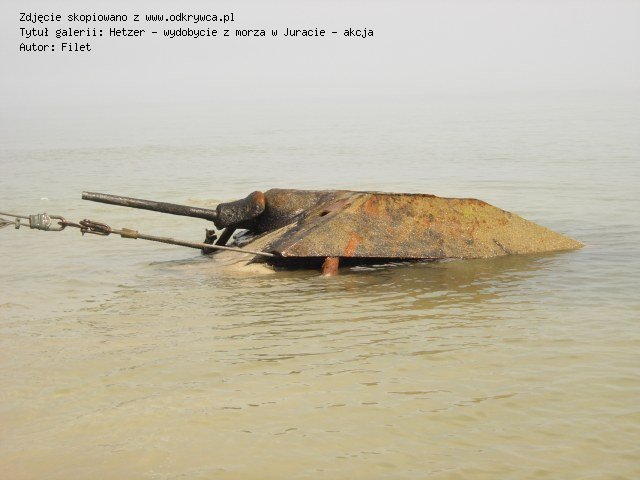 What a beauty!
What a beauty!
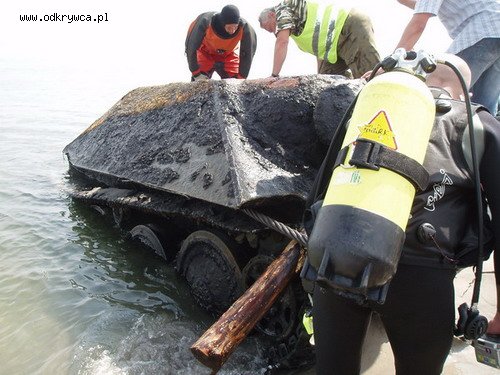 The first inspection, looking great!
The first inspection, looking great!
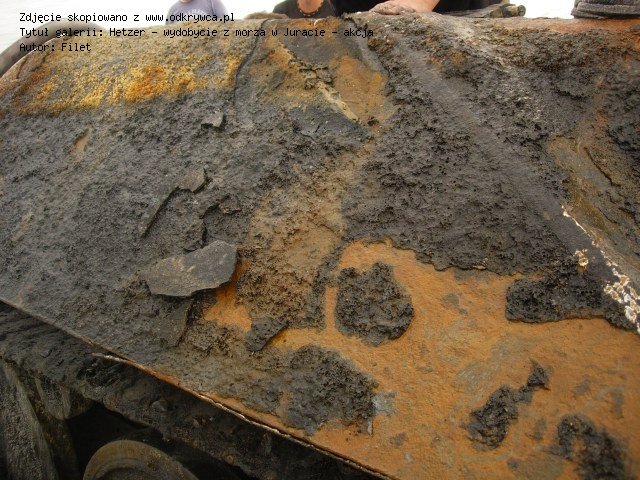 Some rust on the armor plating but not too bad, considering it was under water for over 65 years
Some rust on the armor plating but not too bad, considering it was under water for over 65 years
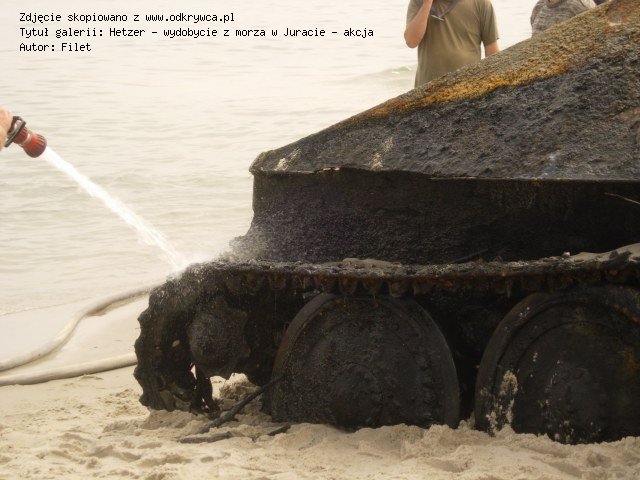 Spraying the sand and sooth off
Spraying the sand and sooth off
 Nearly on dry land, the first inspection continues, the track on the right-hand side is missing.
Nearly on dry land, the first inspection continues, the track on the right-hand side is missing.
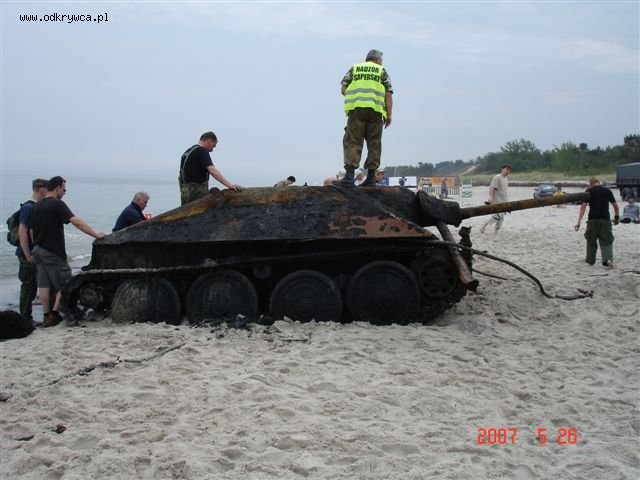 You wouldn’t believe it spent 65 years under water.
You wouldn’t believe it spent 65 years under water.
 What an amazing treasure to rescue
What an amazing treasure to rescue
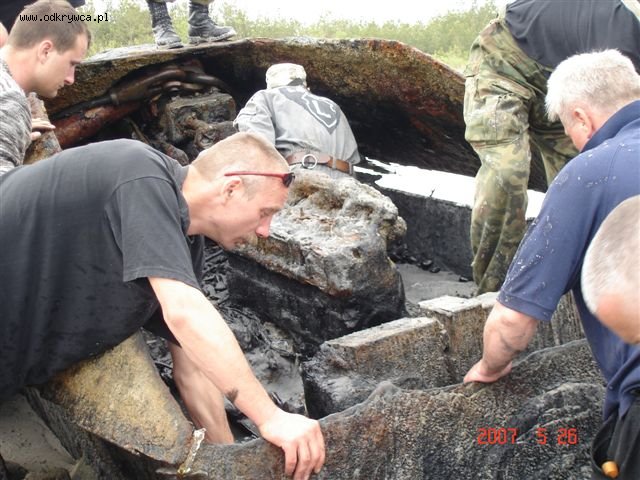 Looking in the Hetzer
Looking in the Hetzer
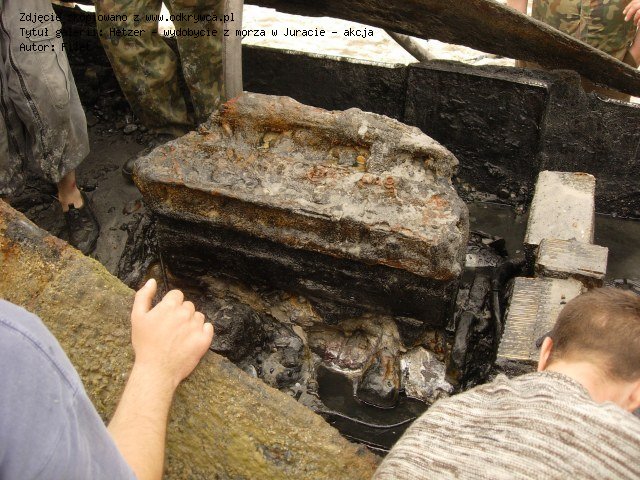 A look at what is left of the engine that won’t start for a while!
A look at what is left of the engine that won’t start for a while!
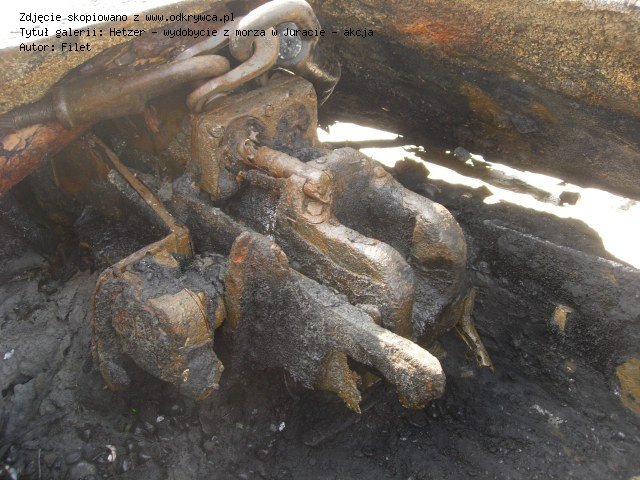 The 75mm gun, a quick wash and ready to go?
The 75mm gun, a quick wash and ready to go?
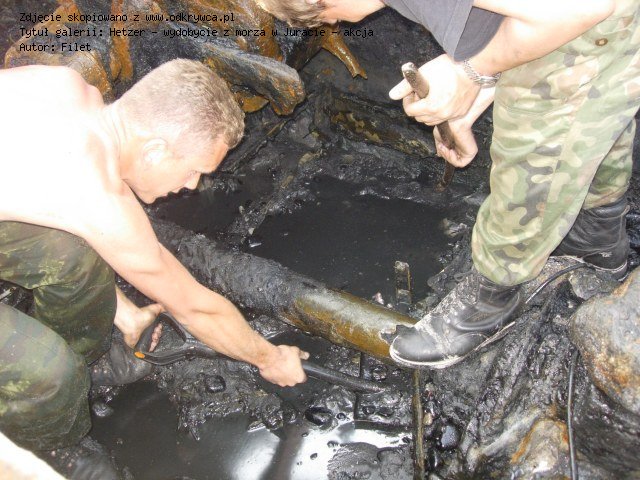 Digging
out the much, the guy on the right is standing on the drive train, the
engine is in the back, the transfer case is at the front.
Digging
out the much, the guy on the right is standing on the drive train, the
engine is in the back, the transfer case is at the front.
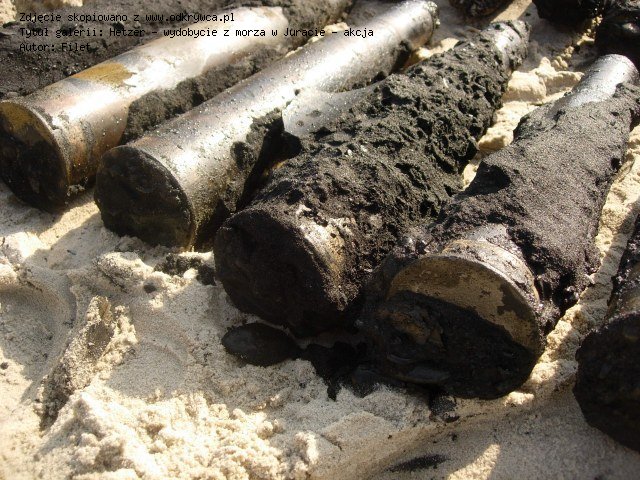 Some of the 75mm shells that were still in the Hetzer
Some of the 75mm shells that were still in the Hetzer
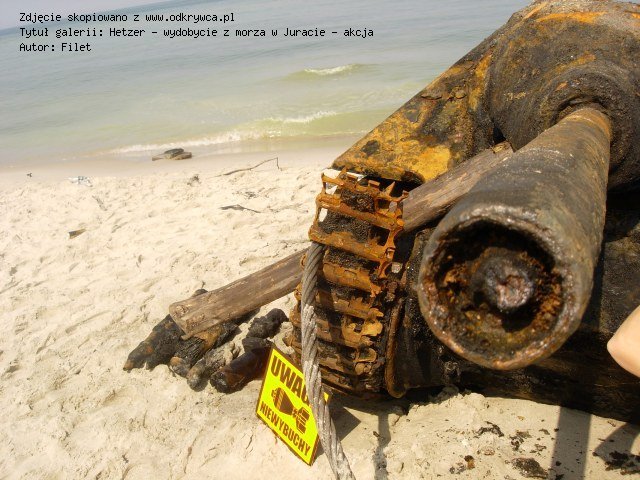 Looking in the barrel, note the recovered shells on the left
Looking in the barrel, note the recovered shells on the left
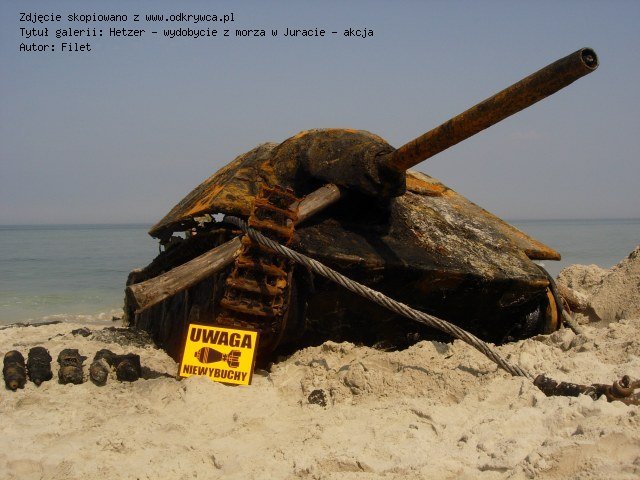 That looks just awesome!
That looks just awesome!
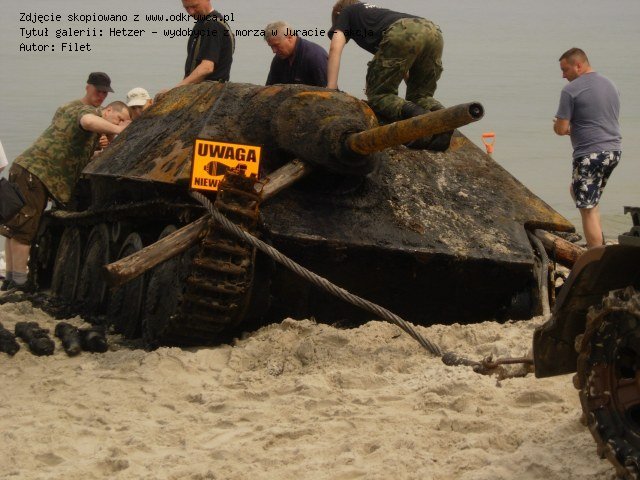 Everybody loves it!
Everybody loves it!
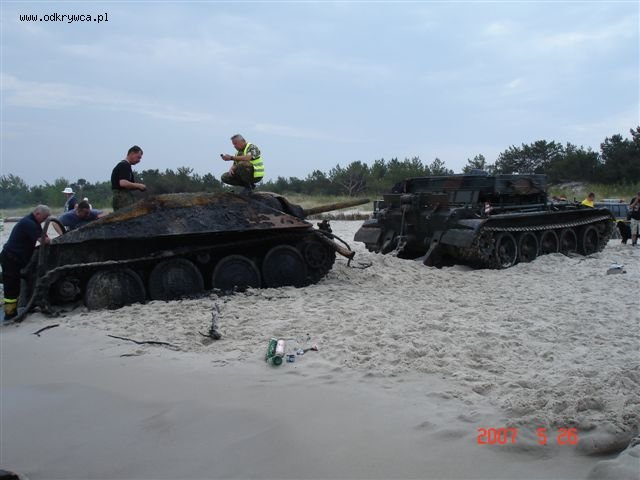 The shells have been removed, time to move the Hetzer
The shells have been removed, time to move the Hetzer
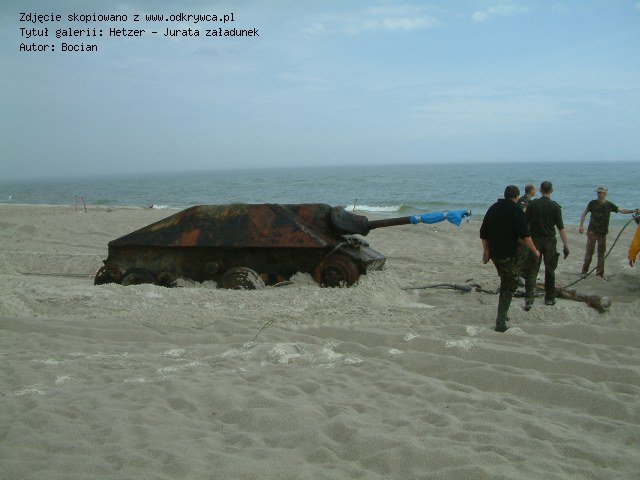 After being pulled the first meters,
After being pulled the first meters,
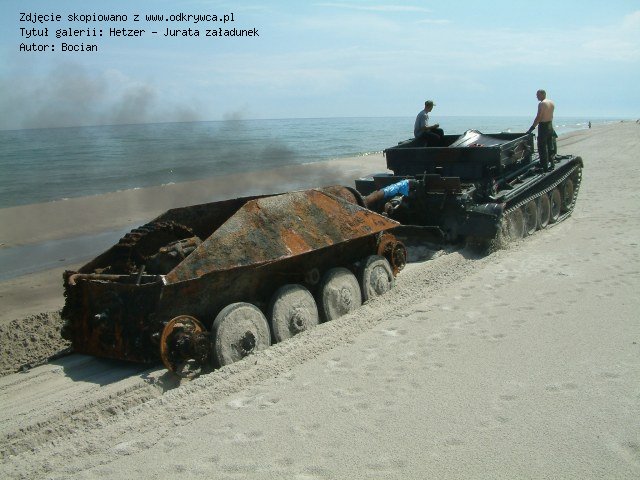 You can clearly see the missing track on the right-hand side, they seem to have stored it in the Hetzer.
You can clearly see the missing track on the right-hand side, they seem to have stored it in the Hetzer.
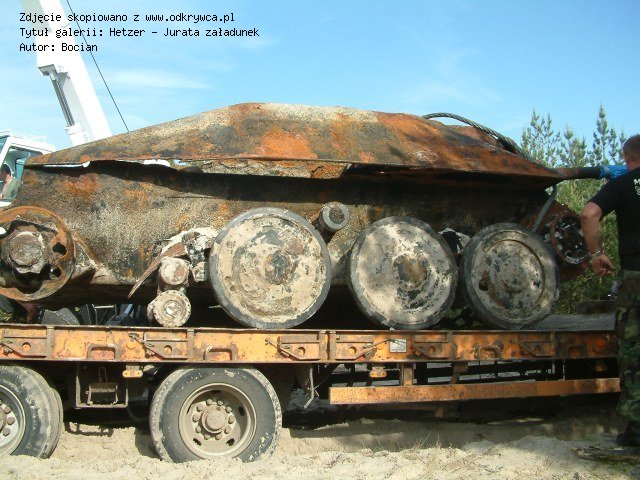 On the low loader, ready to go
On the low loader, ready to go
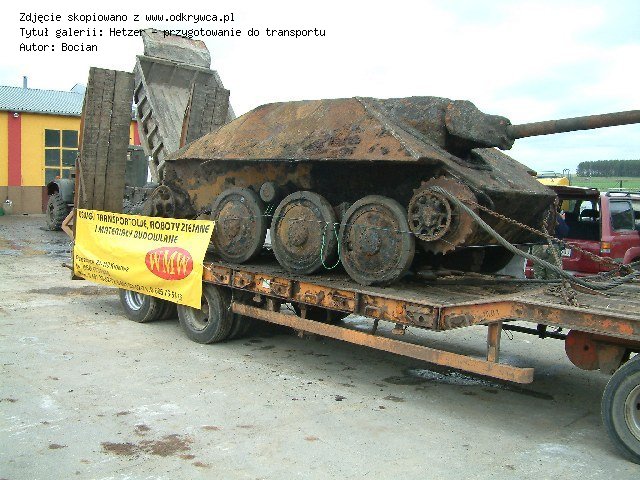 Off to be preserved and restored!
Off to be preserved and restored!
With thanks to the guys over at odkrywca.pl
www.warhistoryonline.com

The FW190 was found in a silver birch forest 1989, near St Petersburg, it was recovered by helicopter in 1991. The current owners are the Flying Heritage Collection which is operated by Paul Allen.
Paul Rätz was a ground crew member before becoming a pilot with 1./JG54 in 1942 and 1943. He had several air victories and survived three crash landings. He was best known as a ground attack pilot and transferred to 4./JG54 on July 9, 1943.
B)Images of the Hetzer pulled from the Gulf of Gdansk in 2007!

The Jagdpanzer 38 was intended to be more cost-effective than the much more ambitious Jagdpanther and Jagdtiger designs of the same period. Using a proven chassis, it avoided the mechanical problems of the larger armoured vehicles.
The Jagdpanzer 38 succeeded the open-top Marder III (based on the same chassis) in production from April 1944; about 2584 were built until the end of the war. The older Marder III Panzerjäger series retained the same vertically sided chassis as Panzer 38(t).
This increased the available interior space and enabled a fully enclosed casemate-style fighting compartment. Because of the fully enclosed armor, it was 5 tonnes heavier than the Marder III.
To compensate for the increased weight, track width was increased from 293 mm to 350 mm.
 A massive digger and a recovery tank are present to recover the Hetzer
A massive digger and a recovery tank are present to recover the Hetzer It is out there somewhere
It is out there somewhere There it is, the first time above the water in over 65 years!
There it is, the first time above the water in over 65 years! A beautiful sight, seeing it slowly rise above the water
A beautiful sight, seeing it slowly rise above the water Nearly
on dry land, look at the sandbar that has immediately formed in front
of the Hetzer, some serious power is needed to get it on dry land!
Nearly
on dry land, look at the sandbar that has immediately formed in front
of the Hetzer, some serious power is needed to get it on dry land! What a beauty!
What a beauty! The first inspection, looking great!
The first inspection, looking great! Some rust on the armor plating but not too bad, considering it was under water for over 65 years
Some rust on the armor plating but not too bad, considering it was under water for over 65 years Spraying the sand and sooth off
Spraying the sand and sooth off Nearly on dry land, the first inspection continues, the track on the right-hand side is missing.
Nearly on dry land, the first inspection continues, the track on the right-hand side is missing. You wouldn’t believe it spent 65 years under water.
You wouldn’t believe it spent 65 years under water. What an amazing treasure to rescue
What an amazing treasure to rescue Looking in the Hetzer
Looking in the Hetzer A look at what is left of the engine that won’t start for a while!
A look at what is left of the engine that won’t start for a while! The 75mm gun, a quick wash and ready to go?
The 75mm gun, a quick wash and ready to go? Digging
out the much, the guy on the right is standing on the drive train, the
engine is in the back, the transfer case is at the front.
Digging
out the much, the guy on the right is standing on the drive train, the
engine is in the back, the transfer case is at the front. Some of the 75mm shells that were still in the Hetzer
Some of the 75mm shells that were still in the Hetzer Looking in the barrel, note the recovered shells on the left
Looking in the barrel, note the recovered shells on the left That looks just awesome!
That looks just awesome! Everybody loves it!
Everybody loves it! The shells have been removed, time to move the Hetzer
The shells have been removed, time to move the Hetzer After being pulled the first meters,
After being pulled the first meters, You can clearly see the missing track on the right-hand side, they seem to have stored it in the Hetzer.
You can clearly see the missing track on the right-hand side, they seem to have stored it in the Hetzer. On the low loader, ready to go
On the low loader, ready to go Off to be preserved and restored!
Off to be preserved and restored!With thanks to the guys over at odkrywca.pl
www.warhistoryonline.com

Δεν υπάρχουν σχόλια:
Δημοσίευση σχολίου